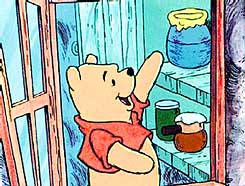The super bacteria were subdued, but not by excess sweetness
Yanai Ofran

British researchers this week confirmed the ancient belief that honey has medicinal properties. No one yet understands exactly why, but it is possible that honey will play a role in curbing one of the most frightening dangers, which have been darkening the sky of medicine in recent years. In test tubes, the honey successfully fights "superbugs", those strains of bacteria resistant to antibiotics that threaten to set medicine back decades.
Most of the victims of World War I died of infections. Until the discovery of penicillin, any open wound was a real danger to life, and this is how children who were cut in the yard died, workers who were injured in work accidents, and even pianists such as the Russian composer Alexander Scriabin, who died in 1915 of his own blood from an infection of a wound on his tongue.
In the decades since Alexander Fleming discovered the first antibiotic, antibiotics were considered a risk-free panacea, and doctors dispensed them by default, whether needed or not. The constant presence of antibiotics in the field put enormous pressure on the bacteria to find a solution that would allow them to survive. Over the years, more and more strains of bacteria were discovered, which managed to develop resistance mechanisms to antibiotics. In response, the microbiologists discovered new antibiotics, which doctors rushed to distribute. Evolutionary pressure was again exerted on the bacteria, and they once again sped up to develop.
In recent years, many experts have raised the fear that the current round of this arms race will end in the defeat of medicine. In the XNUMXs, super bacteria appeared in hospitals in the West for the first time in decades, which did not succumb to any antibiotics. The researchers came out frightened and urgent to fill the doctors' trash, but despite the huge budgets, the enormous financial incentive of the pharmaceutical companies and the intensive research effort, for now the harvest is meager.
The American Ministry of Health, which finances most medical research in the world, founded in the XNUMXs, by order of Congress, a special research institute that received huge budgets to research "complementary and alternative" medicine. One of the justifications for the establishment of the institute was the hope to identify compounds from among the grandmother's medicines and the idol doctors' concoctions, which could be scientifically proven to be effective, and perhaps even find an answer to the superbugs.
As expected, most of the alternative medicines tested to date have failed, but some have passed the initial tests. Honey was also among them. Preference for using honey to treat wounds can be found already in ancient Egypt 5,000 years ago. Experiments from recent years have shown that honey is very helpful in healing wounds. Researchers who injected honey into test tubes where bacteria were growing noticed that the honey inhibited the development of the bacteria.
The scientific literature has offered two explanations. It seems that the sticky and thick texture simply suffocates the bacteria, and it is likely that the huge concentration of sugar also poisons them. Rose Cooper, a microbiologist from the University of Wales, decided to test these explanations. She concocted a honey substitute - a sticky and sweet paste that is able to suffocate the bacteria and poison them just like honey. Together with two other researchers, Koper tested the effect of the honey substitute on super bacteria. They took plates in which antibiotic-resistant bacteria grew, and smeared some of them with real honey and some of them with a honey substitute. It turned out that the lethal effect of the honey was significantly greater than that of the imitation.
The obvious conclusion, the researchers write in an article published in the journal "Microbiology," Journal of Applied, is that there is something else in honey - neither the sugar nor the stickiness - that destroys the bacteria. What is this ingredient? The team leaves this job to the chemists. In the meantime, there are already companies preparing for the production of honey ampoules for treating wounds. Cooper, of course, is still suspicious and cautious. It is necessary to conduct experiments on animals and patients before it is possible to determine how honey can be mobilized for war
in infections.
"We do not suggest that anyone run to the supermarket, buy honey and start applying it," she said this week. Whatever the mystery molecule is that gives honey its antibacterial abilities, it is most likely broken down during pasteurization. And applying unpasteurized honey, which may contain bacteria, on a contaminated wound is even less recommended.
For more information on honey and health, visit the BBC website
The knowledge website was until the end of 2002 part of the IOL portal from the Haaretz group

One response
How can I know who wrote this article and in what year? it's urgent !